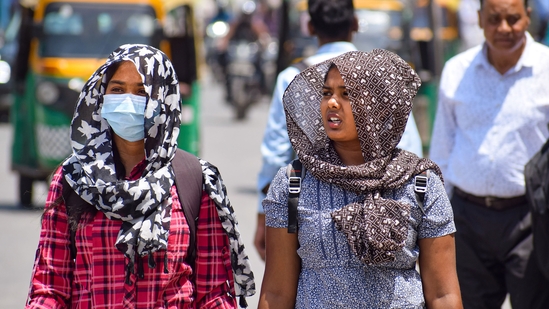
New Delhi: North India is currently experiencing a severe heatwave coupled with increasing air pollution, significantly disrupting daily life across many areas. The India Meteorological Department (IMD) has issued an ‘Orange Alert’ for 13 districts in Uttar Pradesh, including Lucknow, Ghaziabad, Prayagraj, Varanasi, Mau, Ballia, Kaushambi, Jaunpur, and Azamgarh.
This alert indicates a high risk of heat-related health issues and urges residents to exercise caution. Daytime temperatures have risen to around 41°C in these districts, and the IMD warns that the heatwave might intensify over the next two days.
Between May 16 and 18, Delhi is expected to see maximum temperatures between 40°C and 41°C, with lows around 26°C. Humidity levels have also increased to nearly 60%, intensifying the heat’s effects and raising the chances of heatstroke.
At the same time, air pollution levels are worsening, further threatening public health. Data from the Central Pollution Control Board (CPCB) shows that several areas in Delhi, such as Anand Vihar, Alipur, Ashok Vihar, Dwarka, Mundka, Punjabi Bagh, and Narela, have AQI readings above 300, placing them in the “very poor” category. Nearby regions like Ghaziabad and Noida are also reporting AQI levels in the “severe” category, creating serious health concerns.
Medical experts advise vulnerable groups—like the elderly, children, and individuals with heart conditions—to take extra precautions. Recommendations include staying indoors during hottest hours, drinking plenty of water, remaining in shaded or air-conditioned spaces, and wearing masks to minimize exposure to pollutants.
A senior doctor from Delhi’s Safdarjung Hospital emphasized that the combination of extreme heat and polluted air poses a significant danger to those with respiratory and cardiac issues.
Relief might come soon, as the IMD predicts light rains across parts of North India starting May 19, which could help ease the temperatures slightly. Until then, residents are urged to remain cautious and follow safety measures.
